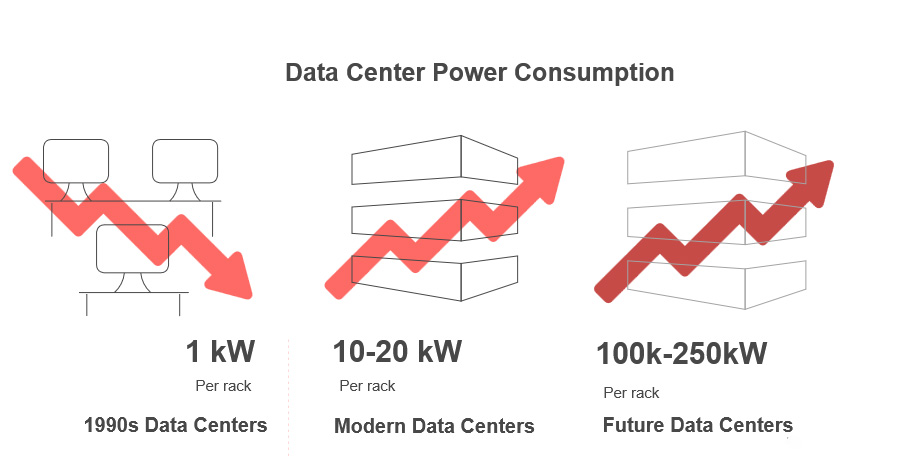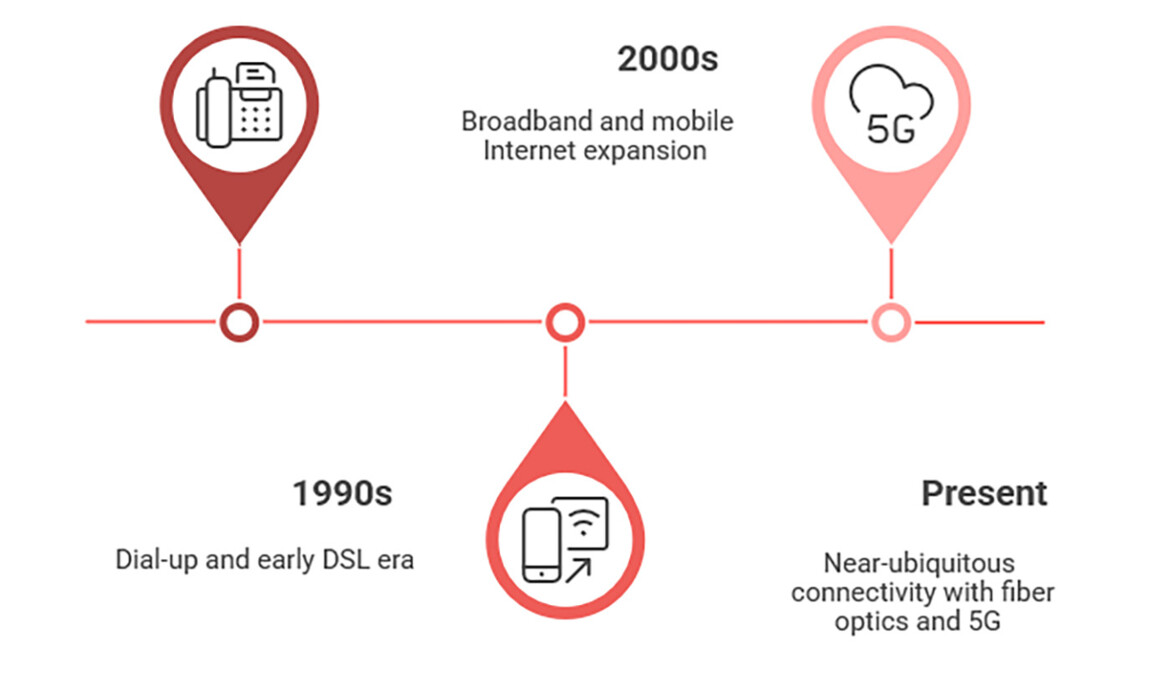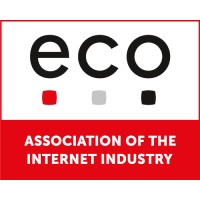Infrastructure, Interconnection, Innovation: What 30 Years Have Taught Us
Klaus Landefeld, Board Member for Infrastructure & Networks, eco Association, unpacks key lessons for today's digital leaders after 30 years of helping to shape Germany’s digital infrastructure, emphasizing innovation, strategic collaboration, and the push for sustainability.

©metamorworks | istockphoto.com
Over the past 30 years, Germany’s Internet infrastructure has grown from academic research networks into the critical backbone of our digital economy. I’ve had the privilege of helping shape the evolution of the Internet industry in Germany and Europe. eco – Association of the Internet Industry and DE-CIX were both founded in the mid-1990s, and I have been part of their journeys and growth over the last three decades. This article distills key lessons from that evolution – lessons that matter more than ever for today’s digital business leaders. From liberalization and infrastructure clustering to energy demands and regulatory shifts, I share insights that can help decision-makers navigate the complexity and opportunities of the next digital decade.
Early days: from academia to a commercial Internet
In the early 1990s, the Internet in Germany transformed from an academic network into a new commercial industry. It was a Wild West period: new technologies like the World Wide Web emerged and startups rushed to find ways to make the Internet useful – and profitable. By the late 1990s, a dot-com boom was fueling ambitious projects in everything from online content to building out fiber networks and data centers.
A crucial enabler for this boom was the liberalization of the telecommunications market. Mid-1990s reforms ended the telecom monopoly and opened the market to private competitors. Suddenly, anyone with the know-how and ambition could start an ISP or network business. Many pioneers (myself included) turned our hobby networks into companies. The lesson for today is that open markets and low barriers to entry spark innovation. When new technologies arise, creating room for competition and experimentation helps birth new industries.
Connectivity hubs and the rise of Frankfurt
During the 1990s, Frankfurt am Main became the primary Internet hub of Germany. This was largely thanks to pre-existing fiber networks installed for the banking sector, which made bandwidth in Frankfurt far cheaper than elsewhere. New ISPs flocked there to interconnect their networks, leading to the founding of the DE-CIX exchange and a virtuous cycle of growth. Today, Frankfurt is one of Europe’s top Internet exchange points.
We often call this effect “IP gravity” – infrastructure and content concentrate where connectivity is abundant, and interconnection thrives the more networks are present. Recently, however, low-latency applications are driving a more distributed approach. Other cities like Berlin are expanding as regional hubs, and edge data centers are being deployed closer to users to meet local demand for content and cloud services. Business leaders should, therefore, consider the geography of their digital infrastructure. Colocating in major hubs can maximize reach, while placing servers at the edge can be crucial for latency-sensitive applications.
Data centers: scaling up and securing sustainability
Data centers have also evolved massively over the decades. In the 1990s, a colocation facility might be a converted office with a few server racks, each using perhaps 1 kW of power. Today’s data centers are purpose-built warehouses with racks drawing 10–20 kW each and requiring advanced cooling and power redundancy, with the upcoming “AI-ready” facilities aiming for an even higher power density of well over 100kW per rack. As businesses digitized their processes and moved mission-critical systems into these facilities, expectations for uptime and security rose. Modern data centers boast multiple power feeds, backup generators, and redundant cooling to ensure high availability. In fact, our data centers and networks are now deemed critical infrastructure, which brings stricter security and resilience requirements from regulators.

With great scale comes great responsibility – and the challenge of sustainability. Powering and cooling thousands of servers consumes vast amounts of energy. The industry (and governments) are pushing for improved efficiency and greener operations. For digital businesses, it’s clear that we must plan infrastructure for the long term – design scalable, energy-efficient systems and continuously optimize, so that we can meet growing demand without untenable costs or environmental impact.
As infrastructure scaled, the services layered on top also grew more complex. While hosting environments for domain registrars, DNS operators, and large-scale email platforms increasingly depend on colocation and hyperscale facilities, these are – and were always – a must for, i.e., online games, social media, or streaming services. Ensuring these digital core functions operate at high availability and efficiency has become a shared responsibility across the infrastructure ecosystem.
From dial-up to ubiquitous connectivity
In the 1990s, going online was a deliberate activity – you dialed in via modem or early DSL and disconnected when finished, since bandwidth was limited and costly. Today, by contrast, connectivity is pervasive and always on. The spread of broadband and mobile Internet in the 2000s, capped by the smartphone revolution (e.g. the iPhone), put the Internet in everyone’s pocket and transformed usage patterns.

Now with fiber optics, 4G/5G, and even satellites, we’re nearing a point of near-ubiquitous connectivity. This hyper-connectivity creates huge opportunities to reach users anywhere, but it also means services are expected to be available everywhere and anytime without fail. Businesses must ensure their networks and applications can handle this “always online” expectation – in capacity, performance, and security – because customers and employees assume continuous access.
This foundation of pervasive connectivity is what enables the everyday reliability of domain-based services, from secure DNS resolution to business-critical email communication. Without resilient network layers and distributed infrastructure, the seamless delivery of email, global access to websites, or the use of SaaS applications would be far from guaranteed.
Embracing the future: networks, cloud, and AI
The coming wave of AI-driven applications will demand even more from our infrastructure. Many emerging services require real-time data processing and analysis, which accelerates trends like edge computing (bringing compute power closer to users) and intelligent network management – being itself based on network-integrated AI for efficient management.
Our networks and data centers must support these innovations with ultra-low latency and high reliability. In practice, that means deploying more micro data centers at the edge and integrating AI capabilities to optimize traffic and services. Staying aware of how new technologies like AI impact network demand will be critical for future-proofing any digital business strategy.
Strategic lessons for today’s digital business leaders
Robust networks and data center infrastructure are the unseen enablers of everything from secure email to DNS resolution and domain-based services. Without fast, reliable, and redundant connectivity, even the most basic online services become vulnerable to disruption.
- Digital infrastructure is fundamental – It forms the foundation of the digital economy. Without fast networks and reliable data centers, digital transformation will stall and ultimately fail. Treat your infrastructure as a strategic asset.
- Plan for resilience and growth – Avoid single points of failure by using multiple providers and diverse locations. A multi-cloud or hybrid approach can mitigate outages and prevent vendor lock-in.
- Leverage proximity for performance – Reducing latency is crucial for many applications. Placing resources closer to users via regional or even edge sites and utilizing local exchanges to optimize latency can enable real-time interactions. Identify which services truly need ultra-low latency and plan accordingly.
- Ensure the reliability of foundational services – Domains and email are mission-critical for identity, communication, and brand trust. Maintaining their availability and integrity depends on resilient infrastructure, smart DNS architecture, and secure routing – all of which must be considered as part of your infrastructure strategy.
- Foster collaboration and community – The Internet’s rapid development and success was built on cooperation and mutually accepted standards. Companies peered at exchange points, built integrated multi-vendor services, and formed associations to share best practices. Engaging in industry coalitions, like the Alliance for the Strengthening of Digital Infrastructures in Germany, and partnerships can strengthen your infrastructure and influence positive change.
- Stay ahead of regulation – As digital infrastructure becomes ever more critical, policymakers are imposing new rules on security and reliability. Treat compliance as a baseline for quality and security. Build protections into your operations early, and engage with policymakers to advocate for sensible rules.
- Prioritize sustainability – Power and cooling constraints are real. Investing in energy-efficient hardware, renewable energy, and innovative cooling (like heat reuse) can reduce costs and environmental impact. Sustainability is not just a PR issue, but increasingly a competitive factor and regulatory expectation. If anything, expect more regulation – particularly in this field.
- Be adaptable – The Internet industry changes fast. Successful leaders cultivate a culture of continuous learning and flexibility. Be ready to integrate new technologies – from AI to whatever comes next – but temper hype with pragmatism. Test innovations on a small scale, learn from failures, and scale up what works.

Looking back on three decades of building and shaping Germany’s Internet infrastructure, it’s clear that our greatest achievements have come from collaboration, resilience, and a commitment to innovation. The digital economy we now depend on did not emerge overnight; it was the result of open markets, freely available global standards, bold experimentation, and a shared belief in the transformative power of connectivity.
As we face the next chapter – defined by AI, decentralized architectures, and growing sustainability demands – we must carry forward these same principles. By learning from the past and acting strategically in the present, we can ensure that our networks and infrastructure are ready not only for what’s next, but for what comes after that.
Klaus Landefeld is an entrepreneur, Internet and Telecommunications expert. He is the Vice-Chair of the Board and Director of Infrastructure & Networks at eco – Association of the Internet Industry. He is also a member of the Supervisory Board of DE-CIX Group AG.
He is an expert on the topics of infrastructure and networks, Internet neutrality, data retention, telecommunications surveillance, and IT security. As early as 1984, he was already setting up mailbox systems and LAN infrastructure, and in 1995 he founded Nacamar Data Communications GmbH, one of the first independent IP service providers in Germany. Following the sale of the Nacamar Group to World Online N. V., Klaus Landefeld was CTO of the pan-European technology division, where he was responsible for 1,500 technicians in 17 national subsidiaries. Since 2001, Klaus Landefeld and nGENn GmbH have been advising companies and state agencies on the establishment and operation of fixed and wireless broadband networks, data centers, and IP-based services. He also acts as the data protection and security officer for diverse carriers.
As a member of various committees worldwide, Klaus Landefeld provides advice and support to organizations and authorities. Among other roles, he is a member of the Committee for Technical Regulation in Telecommunications (ATRT) of the German Federal Network Agency, and a founding member of DENIC eG, AMS-IX, and MINX.





